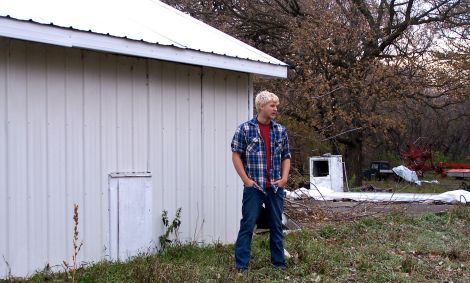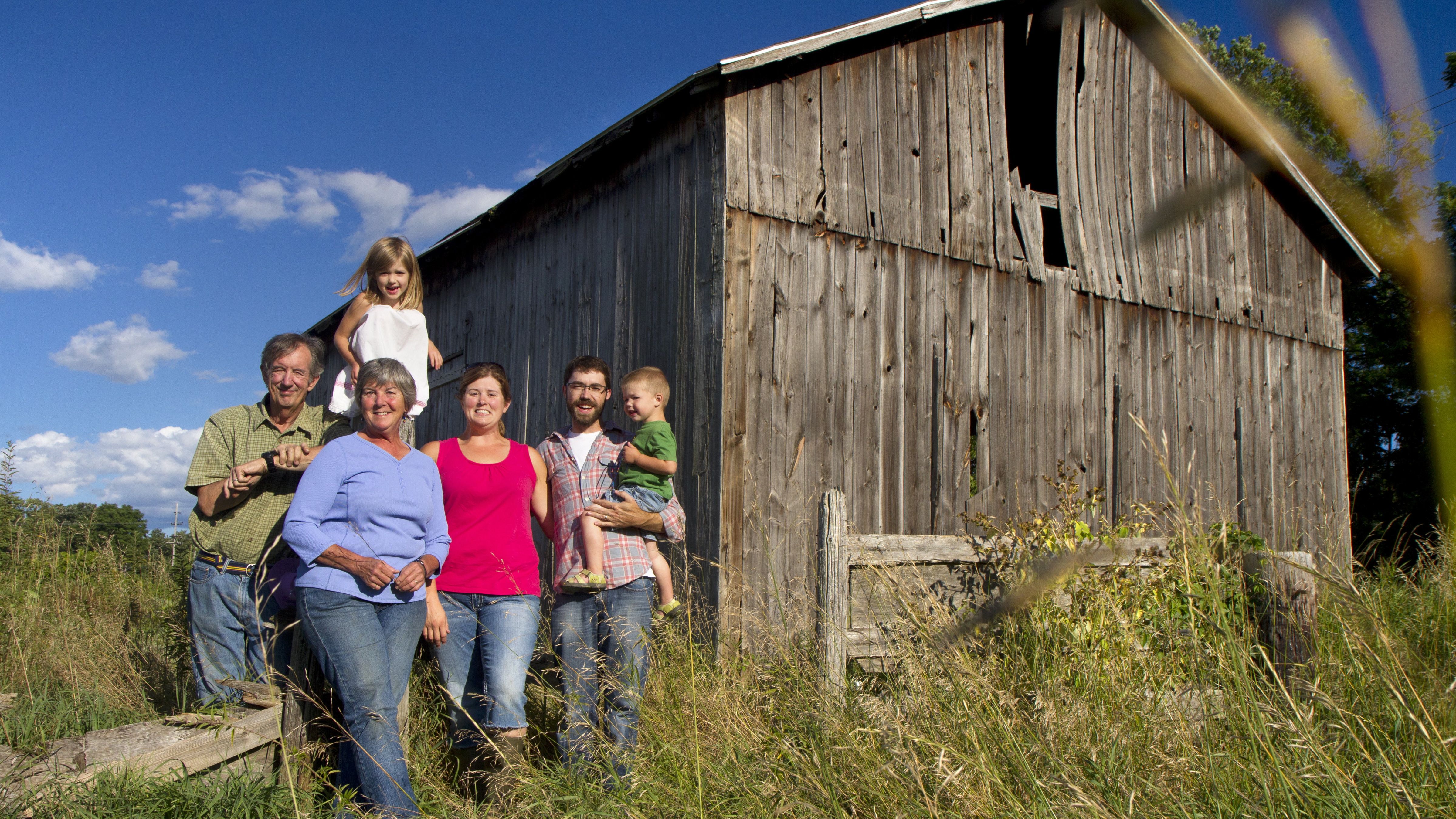Jeff Marshall rolls along the Pennsylvania Turnpike, counting barns on the horizon — 50 so far today, many of them disintegrating. Marshall heads the National Barn Alliance, a nonprofit that works with advocacy groups across the country. He’s speaking on the phone about how many barns have been lost in recent years, as farmers can no longer afford to maintain them, and federal and local funds for restoration dwindle.
According to the American Farmland Trust, we’ve lost 72 million acres of farmland since 1982, with the trend expected to hasten as farmers retire and die. How many barns there once were and how many remain isn’t really known.
But Marshall says a salvation of sorts is taking place. From Texas to Maine, smaller, sustainable farms are finding new uses for their noble barns — and we’re not talking about the weddings that have made both farmers and their neighbors crazy in recent years. These are agricultural uses. A former dairy barn becomes a cheese-making operation, a shelter for draft horses, or a winery. A small whelping barn becomes a place to grow mushrooms, micro greens, and spinach.
“Right now I’m looking out the window, just east of Harrisburg, and guess what I’m passing?” Marshall exclaims. “A barn that is Santa’s Workshop!” The resignation is evident in his voice: While the North Pole elf theme is far removed from farming, at least a barn is saved.

Ben BrownBen Brown and his wife run Sonny’s Farm in Cedar, Mich.
The barn revival seems to be taking root especially with a younger generation.
Ben Brown, 30, who runs Sonny’s Farm in Cedar, Mich., says at first he was “overwhelmed by the beauty and size” of his century-old gambrel roof, former milking barn, but he knew instinctively that it must be saved and once again used for farming. Brown and his wife, Yarrow, have been renovating the structure, using it for breeding and raising poultry. As they dug around the perimeter to work on the foundation, they unearthed “horse shoes, whetstones, grindstones, scythe blades, tractor parts,” he says.
Brian Smith, 35, bought his 57-acre grape, vegetable, and apple farm, Oyster River Winegrowers, in Warren, Me., in 2007. He converted his barn, built in 1925, into a winery, adding insulation and sheathing. Why keep the old barn? Built partially underground, it required no air conditioning. “The most active part of winemaking happens in the cellar,” Smith says.
Most importantly, however, Smith says that preserving the cream, red, and cedar-shingled barn was in keeping with his method of farming: He works without machinery; draft horses are his source of power. A former wildlife and later enology major from Baltimore, he delivers his wine and winter CSA boxes by horse-drawn wagon. It’s all natural, farming like it used to be.

Brian SmithBrian Smith of Oyster River Winegrowers, in Warren, Me.
On Thread Creek Farm in Grand Blanc, Mich., the Knag family is preserving two old barns, each built around 1870, divided by the railroad. The Knags (three generations of the family are pictured at the top of this story) raise corn and gourds and run a local CSA. Ginny Knag hopes to sell cut flowers and vegetables from the gable-roofed barns, which originally housed horses and sheep.
“We’d like to be able to save them, but the single greatest factor is the cost,” Knag says. “We can’t really afford to hire people to do the work that needs to be done, nor do we have the time or expertise. So we’re doing it little by little.”
Not all barn renovations are historic or grand in scope. In Moorhead, Minn., 20-year-old Carsten Thomas decided to reuse a 1975 hog whelping barn that had become a storage shed to grow mushrooms, sprouts, lettuce, and spinach. A dash of florescent lights, a space heater, and minor repairs was all it took for Thomas to save the barn and start a new business.
Thomas grows organic soybeans on 60 acres rented from his father, whose organic farm grows blue corn, soy, barley, wheat, and hay. “The old welting barn — I wanted a winter project. I was just sitting on my hands, and I thought, why not repurpose it?”
The effort paid off. His mushrooms and sprouts are snapped up by local chefs.

Carsten ThomasCarsten Thomas and his repurposed whelping barn in Moorhead, Minn.
Marshall, with the National Barn Alliance, says he’s seeing a younger generation of farmers at state fairs. He expects many to attend the Alliance’s national conference Nov. 11-13 in Savannah, Ga., where much of the emphasis will be on saving barns via sustainable farming.
The reason he finds sustainable farms so key, Marshall says, is that the “niche farmer with less acreage turns out quality, locally grown food at a higher profit margin. Because they use a smaller part of the land, use of the barn can be incredibly beneficial. A new one would be too expensive to build. So this is the best formula for preservation.” (The National Trust for Historic Places has a great report on this subject here.)
And Marshall is not the only one keeping an eye on barns as he cruises the countryside.
Jan Corey Arnett, known as the “Barn Lady” throughout Michigan for her barn books and newspaper column, often goes in search of barns located on small, sustainable farms. Emboldened by the hopes of a save, Arnett, who lives in Battle Creek, knocks on farmhouse doors, speaking to young farmers about the history of barns, many advantages of having one, and possible funding options for helping keep them up. While one of the most effective barn restoration programs, the National Trust for Historic Places’ Barn Again! program, is no longer active, there is still some money to be found, she says.
If a barn’s owners are unable or unwilling to maintain a particularly lovely barn, Arnett will sometimes ask if they are interested in selling, allowing it to be moved and used at another farm. Arnett says she finds new farmers restoring barns, using them as cider mills, mint processing plants, and spice houses.
Why does she go through such great lengths to save and preserve old barns? In part, it’s to ease the pain of loss of the barn on the farm where she grew up, built by her grandfather and now razed. “It was the heart of the farm and it meant so much to my father,” Arnett says.
And to young farmers, she offers this thought: “These barns are irreplaceable. Many are built of virgin timber.” Their story, Arnett says, is “as important in our architecture as the great skyscrapers.”



